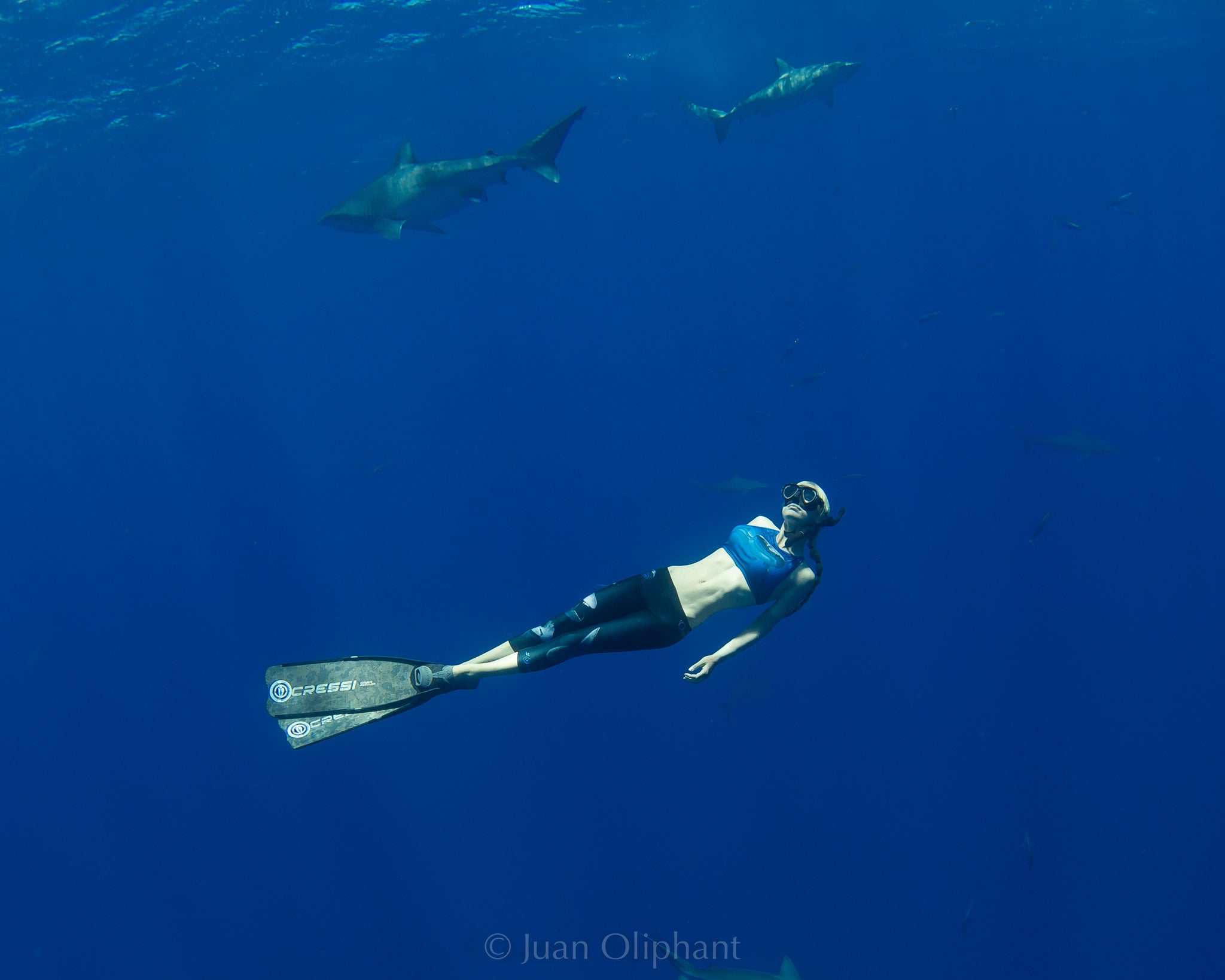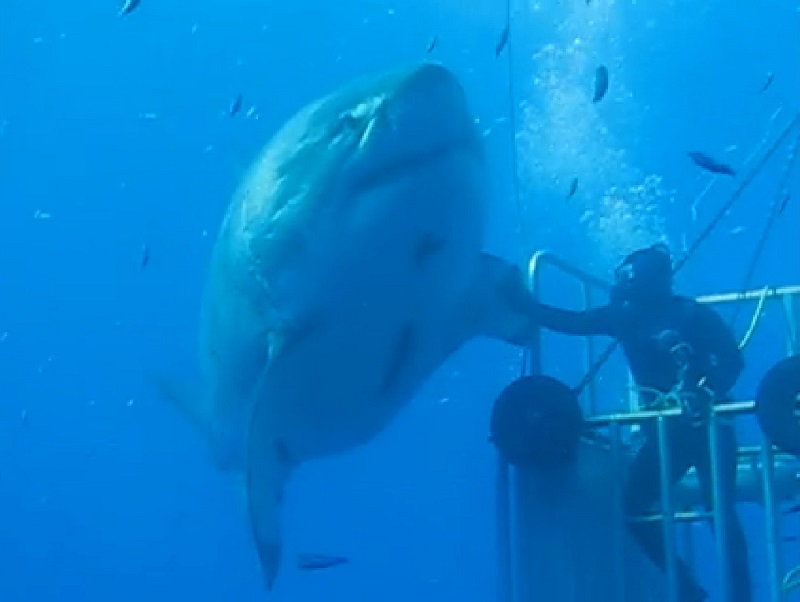
Multiple factors associated with climate-driven deoxygenation contributed to blue shark vertical habitat compression, potentially increasing their vulnerability to surface fisheries. Here, analysis of satellite-tracked blue sharks and environmental modelling in the eastern tropical Atlantic oxygen minimum zone (OMZ) shows shark maximum dive depths decreased due to combined effects of decreasing dissolved oxygen (DO) at depth, high sea surface temperatures, and increased surface-layer net primary production. Ocean and Earth Science, National Oceanography Centre Southampton, Waterfront Campus, University of Southampton, United Kingdom Ĭlimate-driven expansions of ocean hypoxic zones are predicted to concentrate pelagic fish in oxygenated surface layers, but how expanding hypoxia and fisheries will interact to affect threatened pelagic sharks remains unknown.Centre for Biological Sciences, Highfield Campus, University of Southampton, United Kingdom.Okeanos - Departamento de Oceanografia e Pescas, Universidade dos Açores, Portugal.MARE – Marine and Environmental Sciences Centre, Faculdade de Ciências da Universidade de Lisboa, Portugal.IMAR – Institute of Marine Research, Departamento de Oceanografia e Pescas, Universidade dos Açores, Portugal.Instituto de Investigaciones Marinas, Consejo Superior de Investigaciones Científicas (IIM-CSIC), Spain.

 Marine Biological Association of the United Kingdom, The Laboratory, Citadel Hill, United Kingdom. MARE, Laboratório Marítimo da Guia, Faculdade de Ciências da Universidade de Lisboa, Av. CIBIO/InBIO, Universidade do Porto, Campus Agrário de Vairão, Portugal. ©2019 The Charlotte Observer (Charlotte, N.C.)ĭistributed by Tribune Content Agency, LLC. These fish are extremely curious creatures." "The great white shark diet seems to be as diverse as they come. Great white sharks are known to grow to more than 20 feet long and can weigh 2.5 tons or more, according to National Geographic.Įxperts believe the great white sharks off the Carolinas are doing what sharks do best: Feasting on fish dragged north by the Gulf Stream, say OCEARCH. Katherine was tagged 5 years ago, says OCEARCH, and had gone off the agency's radar for six months ago before showing up May 11, not far from Luna's location. The others range in size from 9 feet 8 inches to 14 feet 9 inches, says OCEARCH.Īmong the eight is a 2,300-pound female named Katherine that OCEARCH thought it lost track of due to a depleted battery in the tracker. Four of them are off the Outer Banks, says OCEARCH. Luna is one of eight great white sharks currently being tracked by OCEARCH off North Carolina and South Carolina. It began its journey traveling south from the Canadian coast in October 2018 and made it to the southern tip of Florida before doing a U-turn toward the Carolinas, according to OCEARCH tracking. OCEARCH has been tracking the 15-foot shark for months. Experts say the bump "deflects" the northward flow of the Gulf Stream offshore. That section of ocean gets its name from a sudden rise above the largely flat coastal floor off Charleston, according to NOAA.
Marine Biological Association of the United Kingdom, The Laboratory, Citadel Hill, United Kingdom. MARE, Laboratório Marítimo da Guia, Faculdade de Ciências da Universidade de Lisboa, Av. CIBIO/InBIO, Universidade do Porto, Campus Agrário de Vairão, Portugal. ©2019 The Charlotte Observer (Charlotte, N.C.)ĭistributed by Tribune Content Agency, LLC. These fish are extremely curious creatures." "The great white shark diet seems to be as diverse as they come. Great white sharks are known to grow to more than 20 feet long and can weigh 2.5 tons or more, according to National Geographic.Įxperts believe the great white sharks off the Carolinas are doing what sharks do best: Feasting on fish dragged north by the Gulf Stream, say OCEARCH. Katherine was tagged 5 years ago, says OCEARCH, and had gone off the agency's radar for six months ago before showing up May 11, not far from Luna's location. The others range in size from 9 feet 8 inches to 14 feet 9 inches, says OCEARCH.Īmong the eight is a 2,300-pound female named Katherine that OCEARCH thought it lost track of due to a depleted battery in the tracker. Four of them are off the Outer Banks, says OCEARCH. Luna is one of eight great white sharks currently being tracked by OCEARCH off North Carolina and South Carolina. It began its journey traveling south from the Canadian coast in October 2018 and made it to the southern tip of Florida before doing a U-turn toward the Carolinas, according to OCEARCH tracking. OCEARCH has been tracking the 15-foot shark for months. Experts say the bump "deflects" the northward flow of the Gulf Stream offshore. That section of ocean gets its name from a sudden rise above the largely flat coastal floor off Charleston, according to NOAA. 
It was swimming through a deep sea area known as the Charleston Bump, 80 to 100 miles off the coast. OCEARCH, a nonprofit that tags and tracks sharks, reported in a Facebook post that the 15-foot shark named Luna showed up on tracking records May 9 at 11:34 a.m. That's a fish about the length of a Volkswagen Passat.






 0 kommentar(er)
0 kommentar(er)
